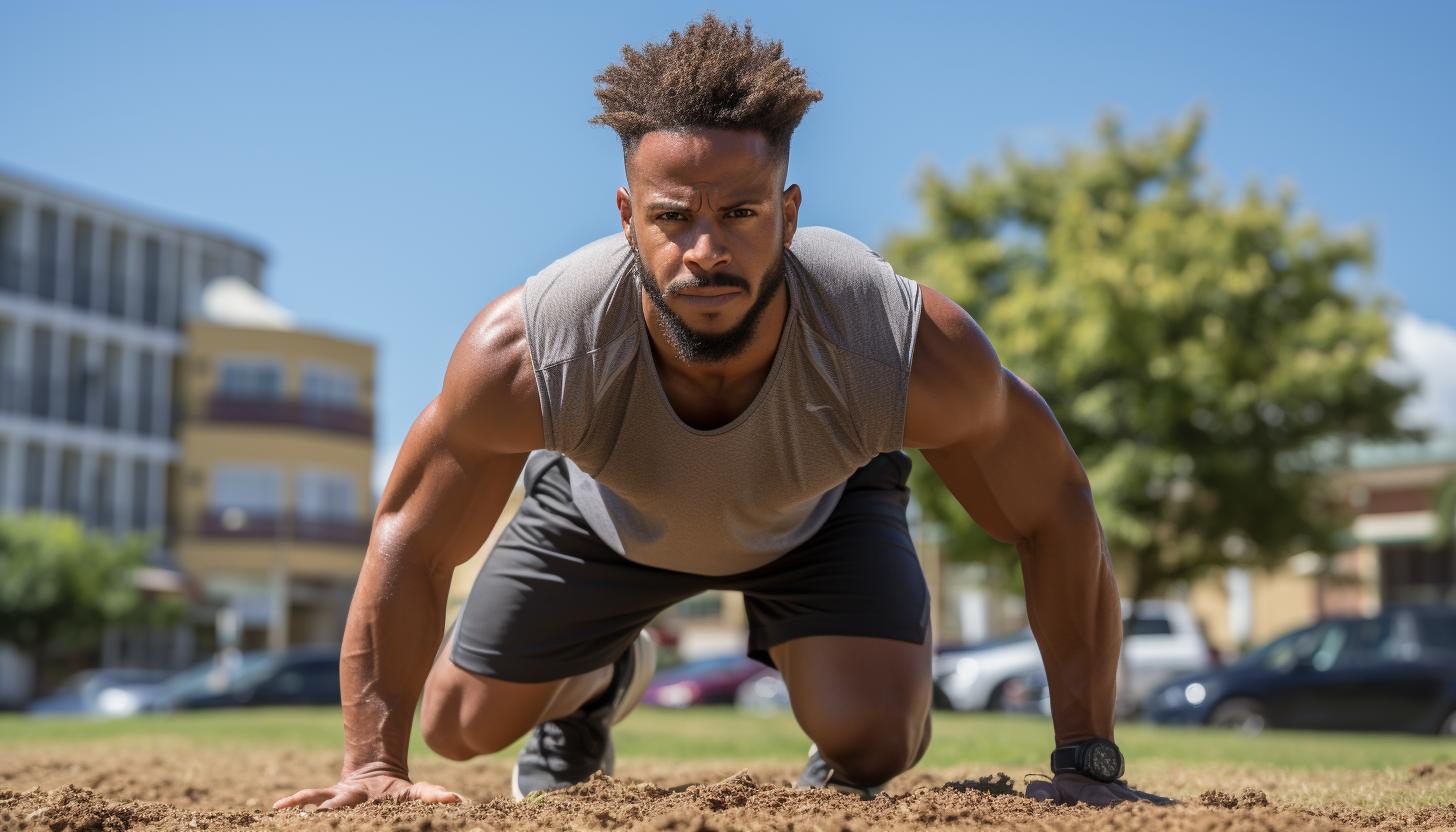The Role of Strength Training in Preventing Running Injuries

Are you tired of being sidelined by nagging running injuries? Well, lace up your sneakers and get ready to hit the gym!
In this article, we will explore the role of strength training in preventing those pesky running injuries that can put a damper on your training. You’ll discover the benefits of incorporating strength training into your routine, which muscle groups to target, and how it improves your running form and efficiency.
Don’t let injuries slow you down – let’s dive into the science behind staying injury-free!
The Benefits of Strength Training for Runners

Strength training offers numerous benefits for runners. It can reduce the risk of injury and improve overall performance. One crucial aspect of strength training is periodization. This involves varying the intensity and volume of workouts over time. Periodization allows for proper recovery and adaptation, preventing overuse injuries that often plague runners.
Core strength also plays a vital role in preventing running injuries. The core muscles stabilize the pelvis and spine, providing a solid foundation for efficient running mechanics. A strong core helps maintain proper posture, reducing stress on other parts of the body such as the hips, knees, and ankles. Research has shown that runners with weak core muscles are more prone to developing imbalances or compensations during their gait cycle. This increases the likelihood of injuries like shin splints or IT band syndrome.
Therefore, it is essential for runners to include exercises that specifically target their core muscles in their strength training program. Planks, Russian twists, and deadbugs are just a few examples of effective core exercises that can be incorporated into a runner’s routine.
Key Muscle Groups to Target in Strength Training for Runners

To prevent running injuries, it is important to focus on targeting key muscle groups in your strength routine. By incorporating specific exercises that activate the glutes and improve core stability, you can enhance your running performance and reduce the risk of injury.
Here are three important muscle groups to target in your strength training routine:
– Glute activation: The glute muscles play a crucial role in stabilizing the pelvis and producing power during running. Weak or inactive glutes can lead to compensatory movements and increased stress on other parts of the body, such as the knees and lower back. Exercises like squats, lunges, and hip thrusts can help activate and strengthen these muscles.
– Core stability: A strong core is essential for maintaining proper form and balance while running. It helps transfer force between the upper body and lower body, reducing excessive strain on individual joints. Incorporate exercises like planks, Russian twists, and dead bugs to improve core stability.
– Hip flexors: The hip flexor muscles help with knee drive during running. Tight or weak hip flexors can affect stride length and increase the risk of injury. Include exercises like leg swings, mountain climbers, or kneeling hip flexor stretches to stretch and strengthen these muscles.
How Strength Training Improves Running Form and Efficiency

Incorporating strength exercises can enhance your running form and efficiency by targeting key muscle groups. By strengthening these muscles, you can improve your performance and reduce the risk of injuries. But strength training is just one piece of the puzzle when it comes to becoming a better runner. Proper nutrition and flexibility training also play crucial roles in preventing running injuries.
To understand the importance of proper nutrition for runners, let’s take a look at some key nutrients that support optimal performance:
| Nutrient | Function | Food Sources |
|---|---|---|
| ————- | :——————: | ————-: |
| Carbohydrates | Provide energy | Whole grains, fruits, vegetables |
| Protein | Repair and build muscles | Lean meats, fish, beans |
| Healthy fats | Support overall health | Avocados, nuts, olive oil |
Proper nutrition ensures that your body has enough fuel to perform at its best while also promoting muscle recovery.
Flexibility training is another essential component for preventing running injuries. It helps improve joint mobility and range of motion, reducing the risk of strains or sprains. Incorporating exercises like dynamic stretches before your runs and static stretches after can help improve flexibility.
Preventing Common Running Injuries Through Strength Training

Flexibility is an essential component in reducing the risk of common running injuries. Incorporating injury prevention strategies for beginner runners can help ensure a safe and enjoyable running experience. One effective strategy is to include strength training as part of your routine. Research suggests that there is a strong link between strength training and running performance, making it an important aspect of injury prevention.
Here are three key ways in which strength training can help prevent common running injuries:
– Improved muscular balance: Strength training exercises target specific muscle groups, helping to strengthen weak areas and correct any imbalances. This promotes better alignment and reduces the risk of overuse injuries.
– Increased bone density: Running puts stress on your bones, so it’s important to have strong bones to withstand this impact. Strength training stimulates bone growth, improving overall bone density and decreasing the risk of stress fractures.
– Enhanced stability and control: Strengthening your core muscles through exercises like planks or Russian twists helps stabilize your body while running. This increased stability minimizes excessive motion at joints, reducing strain on ligaments and tendons.
Incorporating Strength Training Into Your Running Routine

One effective way to include strength exercises in your running routine is by targeting specific muscle groups. By incorporating strength training into your running routine, you can improve endurance and increase speed. Research has shown that adding strength exercises to your training regimen can have significant benefits for runners. When it comes to improving endurance, focusing on the lower body muscles is key. Strengthening the quadriceps, glutes, and calves can help you maintain a steady pace for longer periods of time. To increase speed, it’s important to target both lower body and upper body muscles. Stronger leg muscles will allow you to generate more power during each stride, while strong core and arm muscles will help with stability and efficiency in your running form.
Here is a table showcasing some examples of strength exercises that target specific muscle groups:
| Muscle Group | Exercise |
| Quadriceps | Squats |
| Glutes | Lunges |
| Calves | Calf raises |
| Core | Planks |
| Arms | Push-ups |
Incorporating these exercises into your running routine can help you build overall strength and improve your performance on the road or trail. Remember to start with lighter weights or variations of each exercise until you feel comfortable and gradually increase intensity as you progress. Happy running!
Conclusion
In conclusion, incorporating strength training into your running routine is essential for preventing injuries and improving performance. By targeting key muscle groups, such as the core, glutes, and hips, you can enhance your running form and efficiency.
This will not only reduce the risk of common running injuries but also help you become a stronger and more resilient runner. As the saying goes, ‘An ounce of prevention is worth a pound of cure.’ So invest in strength training to reap the long-term benefits and enjoy a pain-free running experience.






